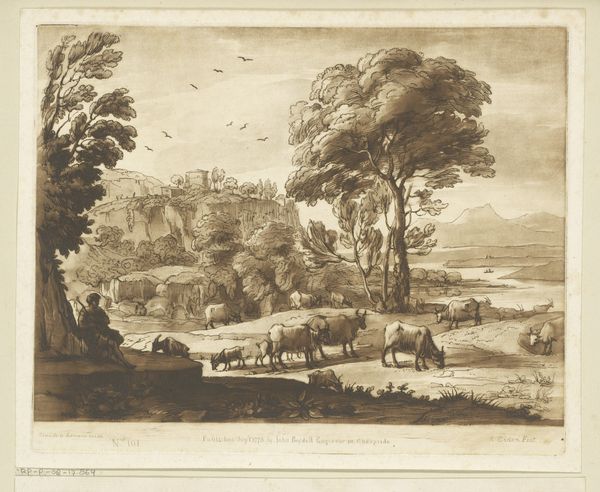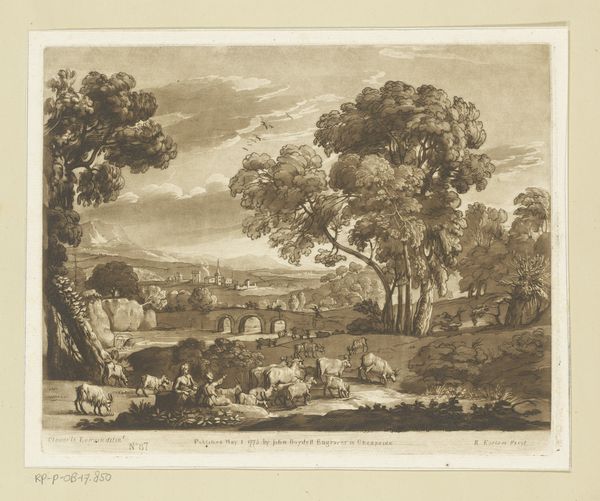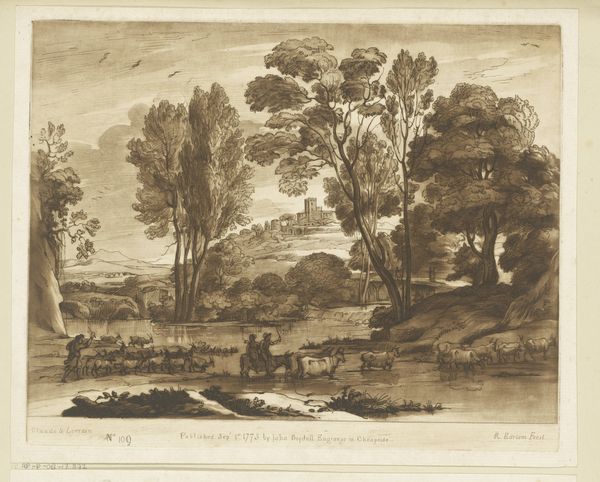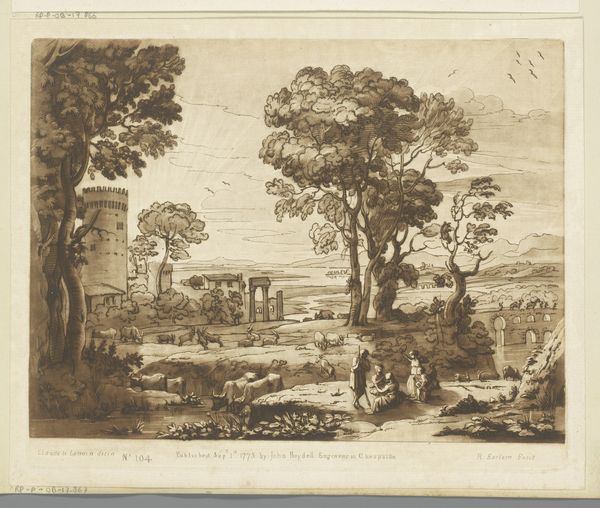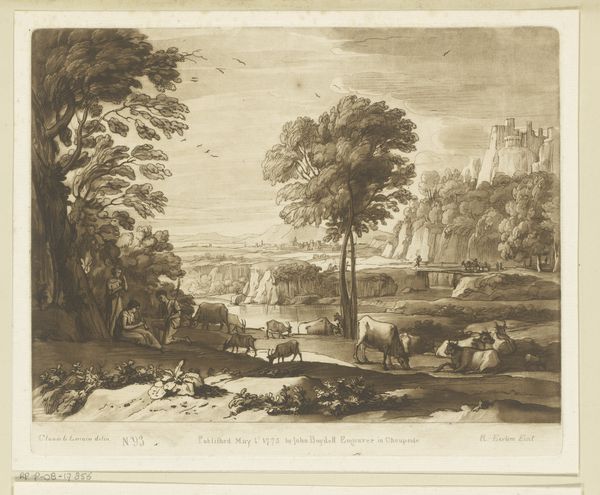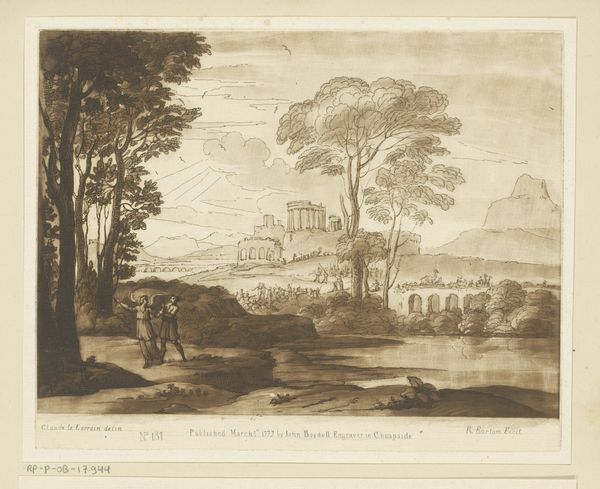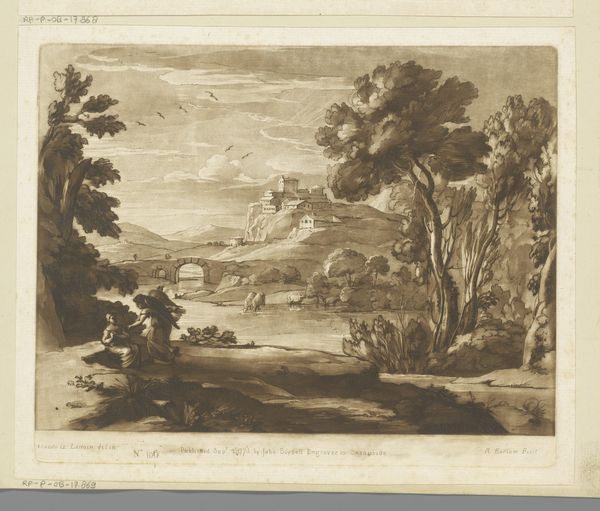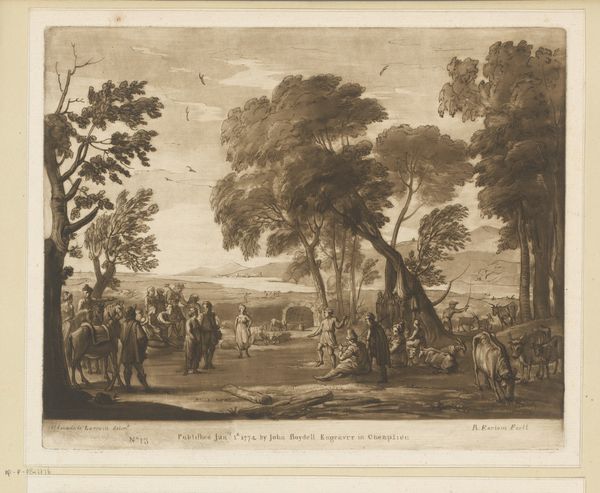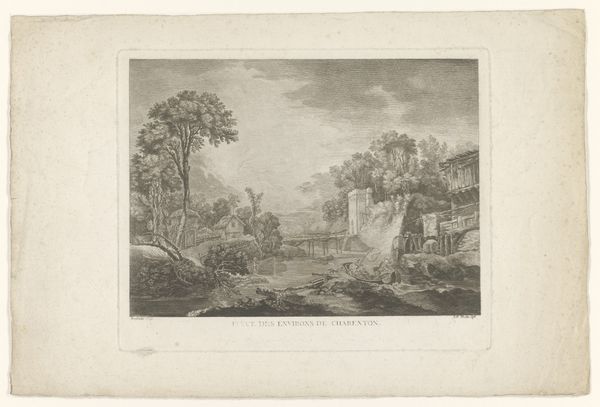
Landschap met de Triomfboog van Constantijn, het Colosseum en tekenaar Possibly 1775 - 1779
0:00
0:00
richardearlom
Rijksmuseum
print, etching
#
neoclacissism
# print
#
etching
#
landscape
#
history-painting
Dimensions: height 207 mm, width 258 mm
Copyright: Rijks Museum: Open Domain
Curator: Let's explore this etching, "Landscape with the Arch of Constantine, the Colosseum and a draughtsman", believed to have been created between 1775 and 1779 by Richard Earlom, currently held in the Rijksmuseum collection. Editor: Initially, the contrasting light and dark draws the eye. The arch feels both grand and diminutive at the same time. The human figure seems like an excuse for the scene, just to ground us somehow in the historical scale. Curator: Considering its place within Neoclassicism, this work highlights the intersection of historical memory and contemporary experience. The arch, a symbol of Roman imperial power, becomes a backdrop for everyday life, almost domesticating the glory of the past. We see human scale juxtaposed with grand achievement. Editor: The composition itself seems meticulously organized—the placement of the arch and Colosseum in the distance, balanced by the prominent trees and figures in the foreground. The interplay of shadow and light certainly accentuates this sense of balance and planned arrangement, leading your eye to notice the individual scenes. Curator: This image reminds us of the enduring fascination with Rome, and, more importantly, the ongoing negotiation with its legacy. This scene subtly raises questions about power, representation, and the very act of viewing. How are we, as viewers, positioned in relation to both the artist and the subjects depicted? And how does the scene echo modern realities? Editor: Agreed. I appreciate how the artist has skillfully created depth and space through varying degrees of detail and contrast. From the almost sketch-like quality of the distant ruins to the sharper delineation of figures and landscape closer to us, a dynamic depth unfolds before our eyes. This is a testament to the technical capabilities within printmaking as a medium. Curator: Ultimately, this work invites us to consider how the past continues to shape the present, even as it recedes into the background of our everyday lives. How do symbols like these intersect in the lives of those portrayed here? Editor: Indeed. It’s a captivating blend of observed reality and formal invention—a window into an artist's deliberate construction of an image.
Comments
No comments
Be the first to comment and join the conversation on the ultimate creative platform.

